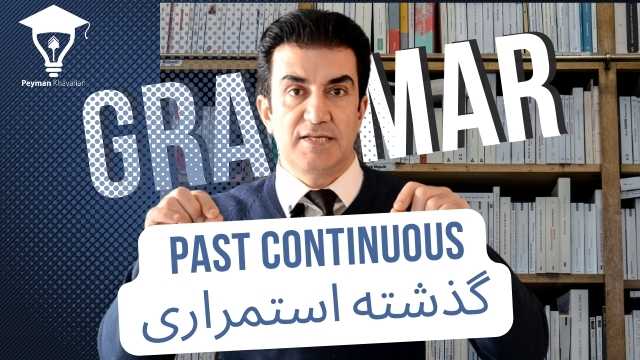Past Continuous Tense زمان گذشته استمراری

The Structure of Past Continuous Tense
The Past Continuous tense, also known as the Past Progressive tense, is used to indicate an ongoing action that was happening at a specific moment in the past. It is often used to describe an interrupted action, a setting or background information, or parallel actions.
Formation
The Past Continuous tense is formed using the past tense of the auxiliary verb ‘to be’ (was/were) and the -ing form (also known as the present participle) of the main verb. The structure is as follows:
- Affirmative: Subject + was/were + Verb-ing
- Negative: Subject + was/were + not + Verb-ing
- Question: Was/Were + Subject + Verb-ing?
For example:
- Affirmative: “She was reading a book.”
- Negative: “They were not playing football.”
- Question: “Were you watching the movie?”
Usage
1. Interrupted Action in the Past
The Past Continuous tense is used to express an action that was in progress at a specific time in the past and got interrupted by another event. The interrupting action is usually expressed in the Simple Past tense. For example:
- “I was having dinner when the phone rang.”
2. Background Description
The Past Continuous tense can also be used to set a scene or provide background information for a story. For example:
- “It was raining and the wind was blowing strongly.”
3. Parallel Actions
When two or more actions were happening at the same time in the past, the Past Continuous tense is used. These actions are usually connected with the conjunction ‘while’ or ‘as’. For example:
- “While I was studying, my brother was playing video games.”
In conclusion, the Past Continuous tense is a vital part of English grammar that allows us to express ongoing actions in the past. Understanding its structure and usage can greatly enhance one’s ability to convey time and sequence in a narrative.
ساختار زمان گذشته استمراری
زمان گذشته استمراری، که همچنین به عنوان زمان گذشته پیشرو نیز شناخته میشود، برای نشان دادن یک عمل در حال انجام که در یک لحظه خاص در گذشته رخ داده است، استفاده میشود. این زمان اغلب برای توصیف یک عمل قطع شده، یک تنظیم یا اطلاعات پسزمینه، یا اعمال موازی استفاده میشود.
تشکیل
زمان گذشته استمراری با استفاده از زمان گذشته فعل کمکی ‘بودن’ (بود) و فرم -ing (که به عنوان فعل حاضر شرکتی نیز شناخته میشود) از فعل اصلی تشکیل میشود. ساختار به شرح زیر است:
- مثبت: فاعل + بود + فعل-ing
- منفی: فاعل + بود + نه + فعل-ing
- سوال: آیا + فاعل + فعل-ing بود?
برای مثال:
- مثبت: “او در حال خواندن یک کتاب بود.”
- منفی: “آنها در حال بازی فوتبال نبودند.”
- سوال: “آیا شما در حال تماشای فیلم بودید?”
استفاده
1. عمل قطع شده در گذشته
زمان گذشته استمراری برای بیان یک عمل که در یک زمان خاص در گذشته در حال انجام بود و توسط یک رویداد دیگر قطع شد، استفاده میشود. عمل قطع کننده معمولاً در زمان گذشته ساده بیان میشود. برای مثال:
- “من در حال شام خوردن بودم وقتی تلفن زنگ زد.”
2. توصیف پسزمینه
زمان گذشته استمراری همچنین میتواند برای تنظیم یک صحنه یا ارائه اطلاعات پسزمینه برای یک داستان استفاده شود. برای مثال:
- “باران میبارید و باد در حال وزیدن بود.”
3. اعمال موازی
وقتی دو یا چند عمل در یک زمان در گذشته رخ میدهند، زمان گذشته استمراری استفاده میشود. این اعمال معمولاً با اتصال ‘در حالی که’ یا ‘چون’ به هم متصل میشوند. برای مثال:
- “در حالی که من در حال مطالعه بودم، برادرم در حال بازی بازی ویدئویی بود.”
در نتیجه، زمان گذشته استمراری یک بخش حیاتی از دستور زبان انگلیسی است که به ما اجازه میدهد تا اعمال در حال انجام در گذشته را بیان کنیم. درک ساختار و استفاده از آن میتواند توانایی بیان زمان و توالی در یک روایت را به طور قابل توجهی افزایش دهد.







دیدگاهتان را بنویسید